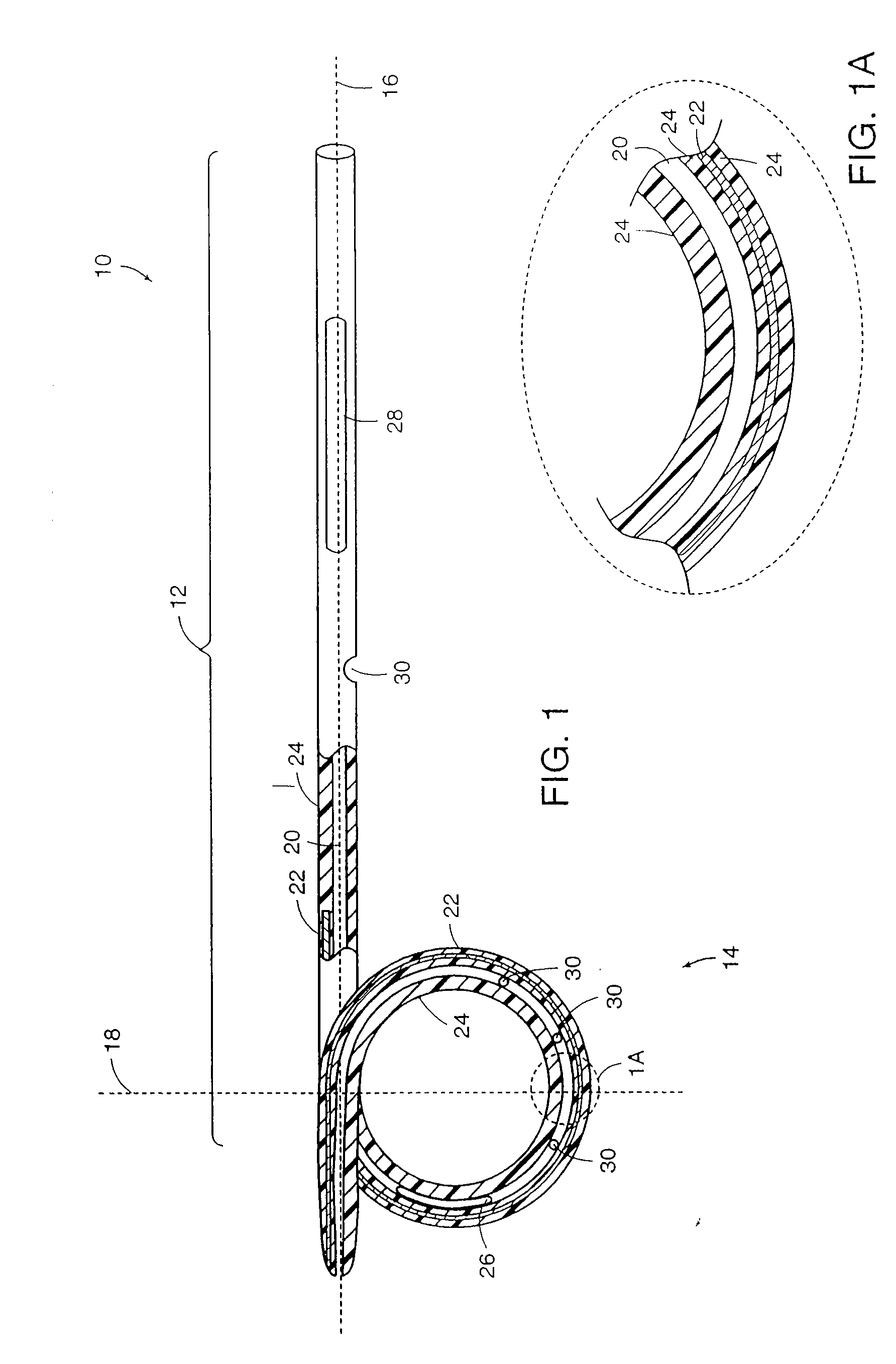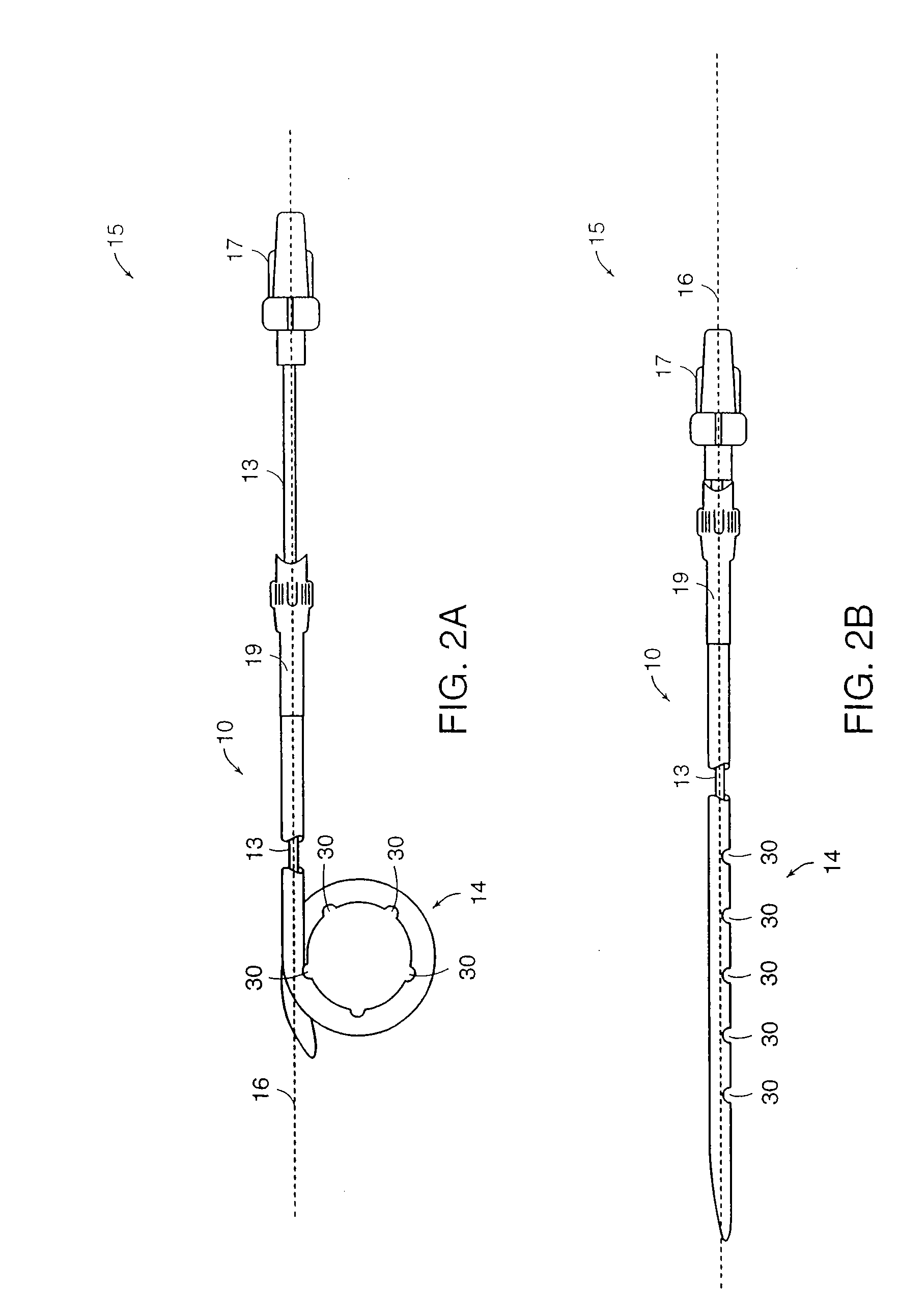Reinforced Retention Structures
a retention structure and reinforcement technology, applied in the field of reinforced retention structures, can solve the problems of limiting the size of the hole that can be formed, failure of the known anchoring mechanism used in medical devices, etc., and achieve the effect of reducing retention strengths and enhancing patient comfor
- Summary
- Abstract
- Description
- Claims
- Application Information
AI Technical Summary
Benefits of technology
Problems solved by technology
Method used
Image
Examples
Embodiment Construction
[0033] Medical devices of the present invention are generally constructed of an elongated member and a reinforced retention structure. The elongated member includes a flexible material and the reinforced retention structure includes the same or a different flexible material with an elastic member embedded within or bound to a surface or groove of the flexible material. Preferred materials for the flexible material include, but are not limited to plastic, silicone, TEFLON®, and other PTFE polymers, polyurethane polymers and the like. These materials may also be provided with radiopaque portions to assist in the implantation of the devices in a body of a patient under fluoroscopic monitoring.
[0034] The elongated member may be tubular or conical or a combination of both. Generally, the elongated member comprises a lumen extending through the entire length of the elongated member to provide drainage of fluid from a body cavity. Alternatively or additionally, drainage may be provided or...
PUM
 Login to View More
Login to View More Abstract
Description
Claims
Application Information
 Login to View More
Login to View More - R&D
- Intellectual Property
- Life Sciences
- Materials
- Tech Scout
- Unparalleled Data Quality
- Higher Quality Content
- 60% Fewer Hallucinations
Browse by: Latest US Patents, China's latest patents, Technical Efficacy Thesaurus, Application Domain, Technology Topic, Popular Technical Reports.
© 2025 PatSnap. All rights reserved.Legal|Privacy policy|Modern Slavery Act Transparency Statement|Sitemap|About US| Contact US: help@patsnap.com



